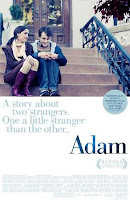
Today I watched the 1953 motorcycle gang classic "The Wild One." The movie was directed by Laslo Benedek and stars Marlon Brando, Mary Murphy, and Lee Marvin. The story is loosely based on a short story which, itself, was loosely based on the actual events of a real motorcycle gang riot in 1947.
The film begins with the Black Rebels Motorcycle Club - identified on their jackets by a skull and crossbones logo, with the crossbones replaced by engine pistons - rolling into an unnamed small town. The leader of the BRMC is Johnny Strabler (Brando), and he quickly falls in love with the local beauty and cafe waitress Kathy Bleeker (Murphy), who has very little experience with the world beyond the town borders. A tentative peace exists between the townspeople and the BRMC, moderated by the local sheriff who is simply trying to avoid a riot. This peace is shattered when a rival motorcycle gang, The Beatles (long before they were a band in Liverpool, apparently) arrives in town, led by Chino (Marvin). The new gang starts a bit of trouble, leading to Chino's arrest. The Beatles then begin to terrorize the town, putting a conservative townsman into a prison cell and threatening to rape Kathy, until Johnny shows up to rescue her. Their romance blossoms briefly, but ultimately she rejects him. When he returns her to town, Johnny finds that the people of the town have become an angry mob ready to kill the next motorcyclist they see. In his attempt to get away, Johnny is hit with a tire iron, and his uncontrolled motorcycle kills an innocent man. Johnny is let off the manslaughter charge on the condition that he and his gang never return, but refuses to directly thank those who helped him. He stops briefly to say good-bye to Kathy before he rolls out of town.
This movie is amazing in its simplicity, serving mainly as a vehicle to highlight Marlon Brando. The plot itself is relatively thin, with almost too much time being spent trying to emphasize the hooliganism of the two motorcycle gangs without developing any of the background characters. Almost the entire cast is shallow and static, with spoken lines strategically used to reveal what we need to know about the characters' motivations.
Yet, at the same time, Brando is at his dark and brooding best. His performance of Johnny is visibly torn between his primary rebellious nature and his romantic feelings for Kathy. Johnny's deep-seeded hatred for authority is clear in his refusal to cooperate with the sheriff, even though it would reveal the truth of what happened during the riot. Brando, in "The Wild One," produced a new kind of cool and, in a way, showed that emotional instability and alienation from the world could be a sign of personal strength and leadership.
The movie, in terms of theme, essentially set the stage for "Easy Rider." There is an obvious tension between the conservative townspeople and the outlaw motorcycle gangs. The townspeople are so caught up in the ideas of law and tradition and respect that they are even willing to go outside the law to prove their point. Meanwhile the motorcyclists are simply trying to get along in a world they have rejected and which has rejected them. It is when these two forces - one of constraint and one of recklessness - clash that the two sides of our society become painfully evident. Although "The Wild One" ultimately ends with the suggestion that these two groups can co-exist in a "you go your way, we'll go ours" way, we are left to wonder, especially in our modern society, whether such a paradigm can be sustained.





